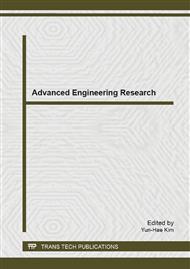p.1194
p.1202
p.1207
p.1211
p.1216
p.1221
p.1225
p.1229
p.1234
Multifractal-Based Texture Analysis for SAR Images
Abstract:
SAR images are widely used in land use cover classifications. This paper proposed using multifractal spectrum parameters to analyze texture of SAR images. First multifractal theory and spectrum calculation method were introduced. Multifractal spectrum of a chaos representation was gotten with the method. From the spectrum curve, five parameters were found to describe the curve features. Then the physical meanings of five parameters in multifractal spectra were analyzed. Multifractal spectra of three kinds of textures in a SAR image are calculated, and five parameters are extracted. Finaly we analyzed the three textures according to physical meanings of five parameters. It is seen that the parameters of multifractal parameters can be used to describe different SAR image textures. It is a novel way to distinguish SAR image textures by multifractal spectrum parameters.
Info:
Periodical:
Pages:
1216-1220
Citation:
Online since:
April 2014
Authors:
Keywords:
Price:
Сopyright:
© 2014 Trans Tech Publications Ltd. All Rights Reserved
Share:
Citation:


